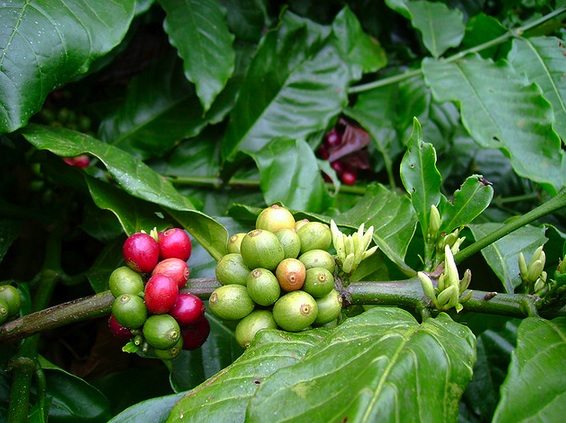by Michael Sheridan of CRS Coffeelands Blog
Ten years ago, almost no one in coffee was talking about hunger in the coffeelands. Now it seems almost everyone is. How did the issue of food security in coffee communities move from the margins to the mainstream of the industry’s sustainability agenda in just a few short years? The answer is both important and timely if we are to fix what’s broken in the coffee business.
So how did it happen?
It happened because the coffee industry went places it had never gone and asked questions it had never asked before. More precisely, Green Mountain Coffee Roasters did. It had the curiosity to ask the questions, and the courage to publish the answers. The conviction to put those answers in front of industry leaders again and again until we could no longer ignore the reality of hunger in the coffeelands. And the commitment to act — along with others in the industry committed to change — to address the issue, in part because it is the right thing to do, in part because it poses a threat to the coffee business.
(more: Exploring the Economic Impacts of Microlots with Counter Culture, Stumptown and Intelligentsia)
Why is this story important? Because it suggests that the industry’s sustainability agenda is not immune to appeals that tug on our emotions but are based on evidence: the agenda can evolve along with our understanding of the realities of life at origin.
Why is this story timely? Because there is a growing sense that the coffee business is broken. If it is going to be fixed in any lasting way, we need to have a deeper understanding of what we are up against. That means understanding the current challenges better than we do now and improving the ways we address them. And it may also mean surveying the landscape again to see whether there are things happening in the coffee chain that do not appear on the industry’s sustainability agenda but do pose threats to the coffee chain.
In 2003, coffee industry veterans didn’t know that the people who grow our coffee experience annual lean seasons that are measured in months. In 2013, companies that compete in the marketplace are working collaboratively at origin to address the issue. What will be the burning sustainability issues in 2023 that no one is talking about today?
(more: Column: Central America’s Smallholder Farms Too Reliant on Coffee Income)
During the Age of Exploration, explorers and mapmakers made forays to the frontiers to survey uncharted territories and report back to their patrons. The waters they sailed through were marked on earlier maps by dragons, and the mountain passes with skulls and crossbones. The leaders who put hunger on the industry’s sustainability agenda are their modern-day coffee equivalents and heirs to their tradition. We may need another generation of explorers to map the risks facing the coffee enterprise today.
The good news is that as of this writing coffee roasters, coffee traders, coffee certifiers, coffee associations — and yes, NGOs like CRS — are all busy chasing supply chain risks into unfamiliar territory. If we identify new sources of risk or help shed new light on old ones, we can redraw the industry’s risk map and its sustainability agenda in ways that may help it navigate these troubled waters.
Michael Sheridan
Michael Sheridan is the Chief Executive Officer of the Coffee Quality Institute, a nonprofit organization with a mission to improve coffee quality and the lives of those who produce it. Sheridan has been leveraging market forces to make coffee work for smallholder farmers and farm workers since 2004. Most recently he directed progressive green coffee sourcing activities and direct-trade partnerships at Intelligentsia Coffee. Prior to that he worked to deliver initiatives in the coffee sector in Central and South America on behalf of Catholic Relief Services.
Comment
2 Comments
Comments are closed.







Yes, yes and yes. We are on board. Let’s keep pushing towards REAL sustainability.
Michael, it is hunger in coffee growing areas, and for that matter in many other tropical agricultural production systems where smallholders are engaged, is an issue that deserves all the attention and help we can possibly muster. You asked the question: “So how did it happen?” I would like to put the record straight that it was not the coffee industry asked questions it had never asked before. It was a team of researchers of the International Center for Tropical Agriculture (CIAT) that ask the right questions, and then opened a dialogue with Green Mountain Coffee Roasters (GMCR). CIAT researchers were contracted to look into the aspects of sustainability of selected supply chains of GMCR, mainly those of organic coffee production systems, in order to develop key performance indicators (KPIs) for the pioneering roaster. The team illustrated the issue of hunger as one of their findings (besides the migration of labor, dependence on remittances, limited access to basic services). This takes nothing away from GMCR, who stepped up and did something about the issue. That is what GMCR deserves all the credit for. The roaster has all my admiration, and that of many others, for taking on one of the most severe and sad aspects in coffee growing regions. With kind regards. Thomas Oberthur